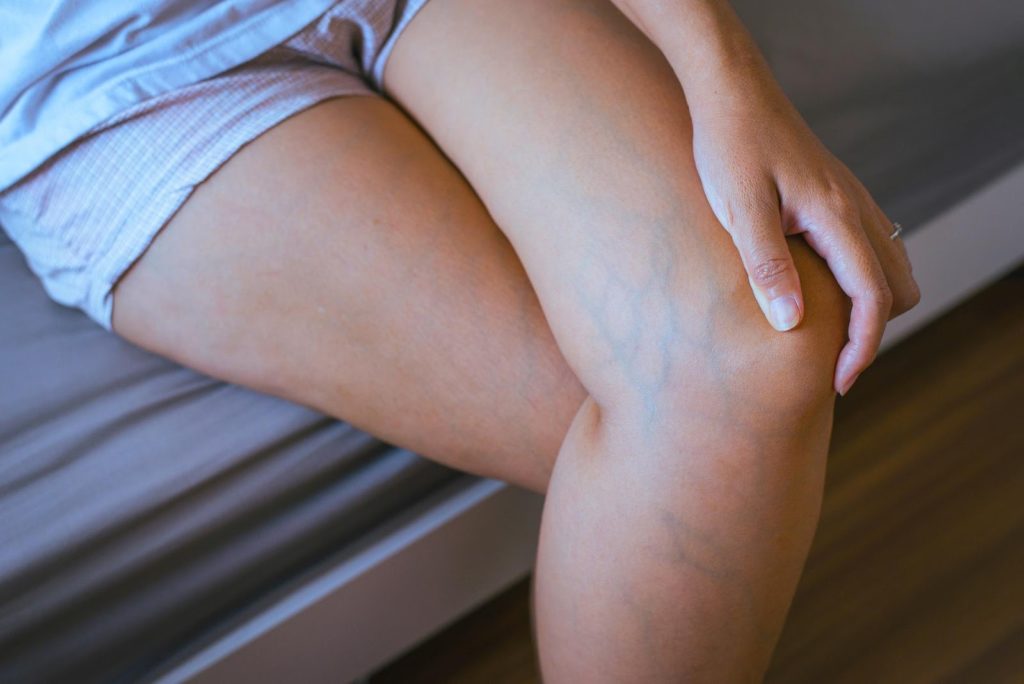Why You Should Consider Varicose and Spider Vein Treatment
Every person has blood vessels throughout their body. They are essential—they help transport blood to and from our hearts while delivering nutrients, hormones, and medications to organs, muscles, and tissues. Although we all have veins and very much need them to help transport blood throughout our body, they can become unsightly and unhealthy for those who suffer from varicose or spider veins. The good news is that today’s treatments are quite advanced and have helped many women deal with this problem and return to healthy beautiful legs.
Two of the most common types of venous issues include varicose veins and spider veins. So what’s the difference? In this post, we’ll sift through the difference between the two and explore some prevention tips, treatment options, and why treating them is safe for medical reasons.
America’s Vein Health and Instances of Chronic Venous Insufficiency
Vein health doesn’t get a lot of attention, but it affects many Americans. While estimates of how prevalent it really varies significantly, varicose veins do occur frequently in the Western world. The estimates vary from 2-56% in men and from 1-60% in women. The range is different because studies reflect variabilities in age, ethnicity, and methods of measurement.
In other words, the number of people who suffer from venous diseases can be complicated to measure as many people go untreated, symptoms vary widely, and how they are measured may vary from study to study.
Veins are necessary to carry deoxygenated blood back to the heart. They are resilient little vessels, working against gravity day after day. Your leg muscles and these tiny little valves are tasked with helping this along. Sometimes, there are small backlogs or the process slows down due to various factors. That’s when the veins pop up on the skin’s surface.
What Are Spider Veins?
The name “spider veins” refers to the superficial veins that appear closer to the skin’s surface. These are typically tiny veins that congregate below the surface and appear as small red or blue constellations or splashy veins. The name is telling, as it aptly describes the visual characteristics of these types of veins: they appear like thin spiders on the skin.
As pressure is created in the veins, spider veins can become more prominent. Pressure in the legs, for example, can be caused by bigger varicose veins or other factors.
Spider Veins are Most Common in the Lower Extremities
Spider veins are typically found in the lower extremities and found on:
- Ankles
- Calves
- Thighs
- Face
Once spider veins appear in the legs, it’s not really possible for them to go away on their own. Spider veins are not harmful and don’t necessarily indicate any impending risk, but the visible signs of spider veins can clue people in to get their vein health checked in case there are underlying problems that can be addressed early.
Treatments for Spider Veins
Sclerotherapy is a common treatment option for spider veins. This is an outpatient walk-in and walk-out procedure that doesn’t require a complicated recovery. During sclerotherapy, a vein expert will inject a special solution (either sodium tetradecyl or polidocanol) that collapses the vein and makes it disappear. It becomes a blood clot and is then removed by the body.
What are Varicose Veins?
Varicose veins are an indication of damaged vein walls and valves. If blood pressure increases inside the veins, this may cause them to bulge and create discomfort. Sometimes, however, varicose veins do not produce symptoms.
Causes of varicose veins include:
- Obesity
- Pregnancy
- Constipation
- Tumors
- Or other medical conditions
What are the Treatments for Varicose Veins?
Depending on the stage of your varicose veins and any accompanying symptoms there are different types of treatments to consider. A vein specialist will first begin by reviewing lifestyle changes that can be made to improve the condition or prevent it from getting worse.
Interventions will usually include:
- Lifestyle changes
- Medication
- Compression socks
- Endovenous laser therapy
- Sclerotherapy
Reasons Treatments for Varicose and Spider Veins Might Be Right For You
Many who suffer from varicose veins may not have painful symptoms but choose to get treatment regardless. While some spider veins or varicose veins don’t always result in long-term issues, it is still possible to get the treatments.
Most patients find that sclerotherapy is an effective treatment for both spider veins and varicose veins. Here are a few reasons why getting treatment may benefit you:
You have a genetic disposition
People who suffer from varicose veins or other venous diseases often have a genetic disposition. This means that maybe you experience varicose veins as early as your 20s, 30s, and even 40s.
You are worried about future complications
Perhaps you don’t have any active symptoms for your varicose or spider veins but are worried they may worsen over time. Treating these smaller spider veins is a simple procedure with great results.
Get the Right Treatments at EP Varicose Veins!
Today’s vein treatments are performed on patients for medical reasons. Talk to a vein specialist and find out if any of the treatments might be right for you. As a professional laser clinic, we offer state-of-the-art equipment and treatments for your vein health.
Call EP Varicose Veins today and learn more about what we have to offer.

